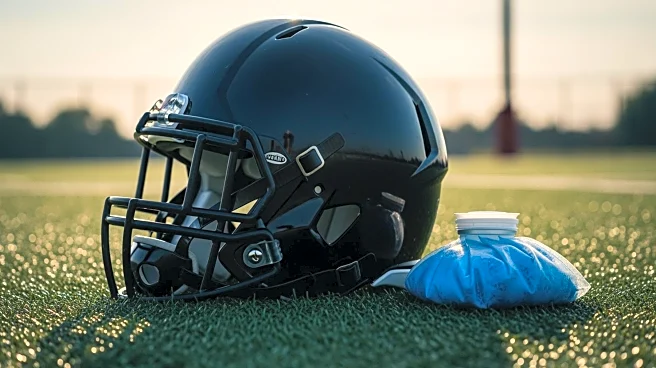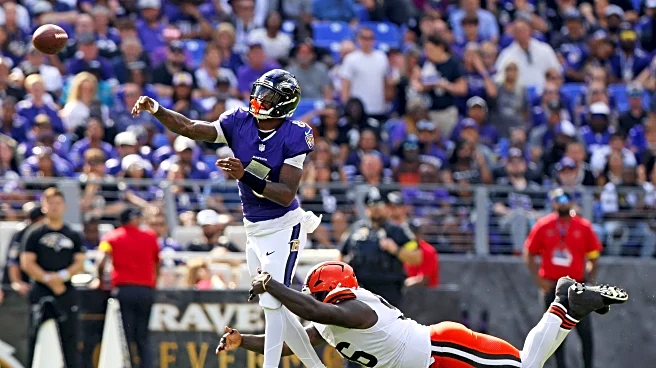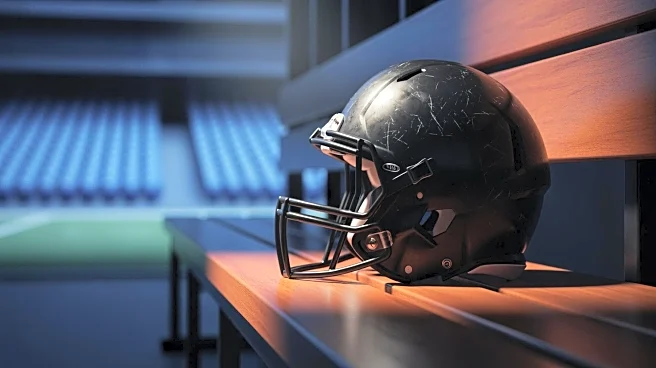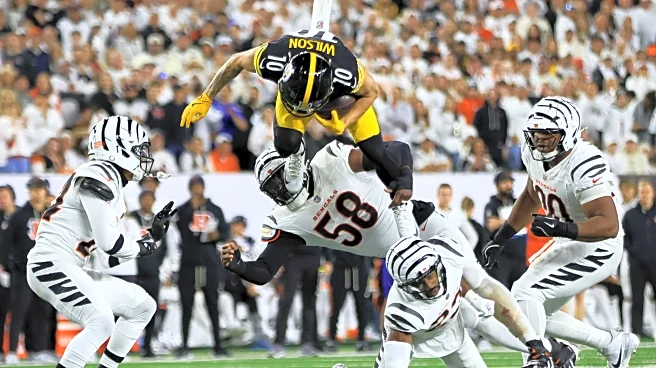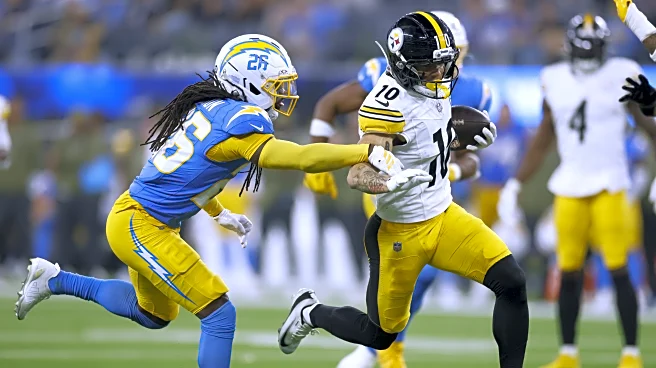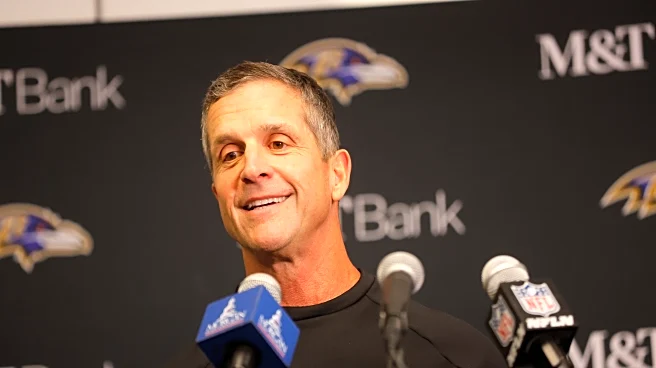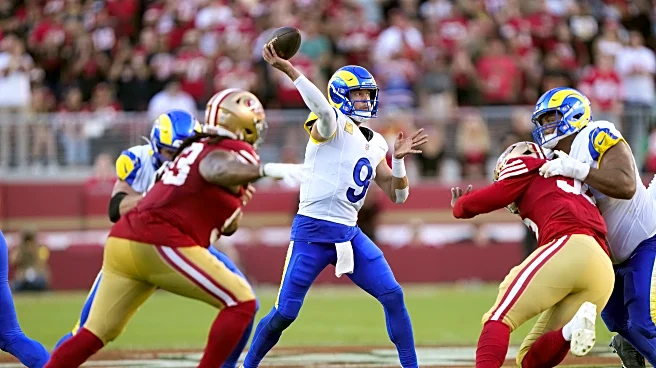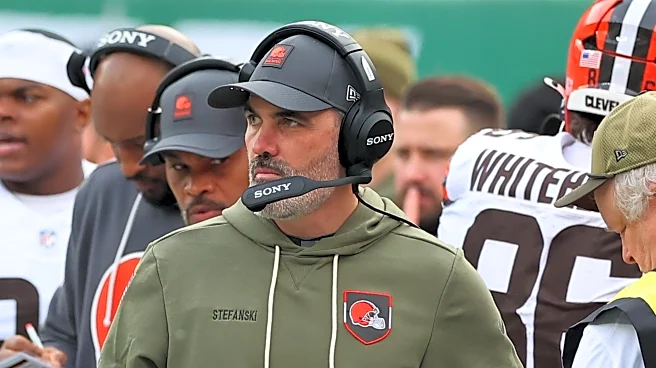What's Happening?
Baltimore Ravens quarterback Lamar Jackson was absent from practice on Wednesday due to a knee issue, as confirmed by coach John Harbaugh. This comes shortly after Jackson returned from a hamstring injury,
having played the last two games. Harbaugh downplayed the severity of the knee problem, expressing optimism about Jackson's participation in upcoming practices. The Ravens, currently with a 4-5 record, are dealing with multiple injuries across their roster, including key players like receiver Rashod Bateman and cornerback Marlon Humphrey. Despite these challenges, the Ravens have won three consecutive games and are close to first place in the AFC North.
Why It's Important?
Lamar Jackson's health is critical to the Ravens' success, especially as they aim to maintain their winning streak and compete for the top spot in their division. His absence from practice raises concerns about his availability for upcoming games, which could impact the team's performance. The Ravens' ability to manage injuries and maintain a competitive edge is crucial as they face tough opponents like the Cleveland Browns and New York Jets. The team's depth and resilience will be tested as they navigate these challenges.
What's Next?
The Ravens will need to monitor Lamar Jackson's knee condition closely and make strategic decisions regarding his participation in games. Coach Harbaugh's optimistic outlook suggests that Jackson may return to practice soon, but the team must prepare for potential adjustments if his condition worsens. The Ravens will also focus on managing other injuries within the team to ensure they can field a competitive lineup. Their upcoming games against the Browns and Jets will be pivotal in determining their standing in the AFC North.
Beyond the Headlines
The Ravens' current injury situation highlights the physical demands and risks associated with professional football. It underscores the importance of player health management and the role of medical staff in ensuring athletes' well-being. The team's ability to adapt to injuries and maintain performance levels is a testament to their depth and strategic planning. This situation also reflects broader trends in the NFL regarding player safety and injury prevention.
